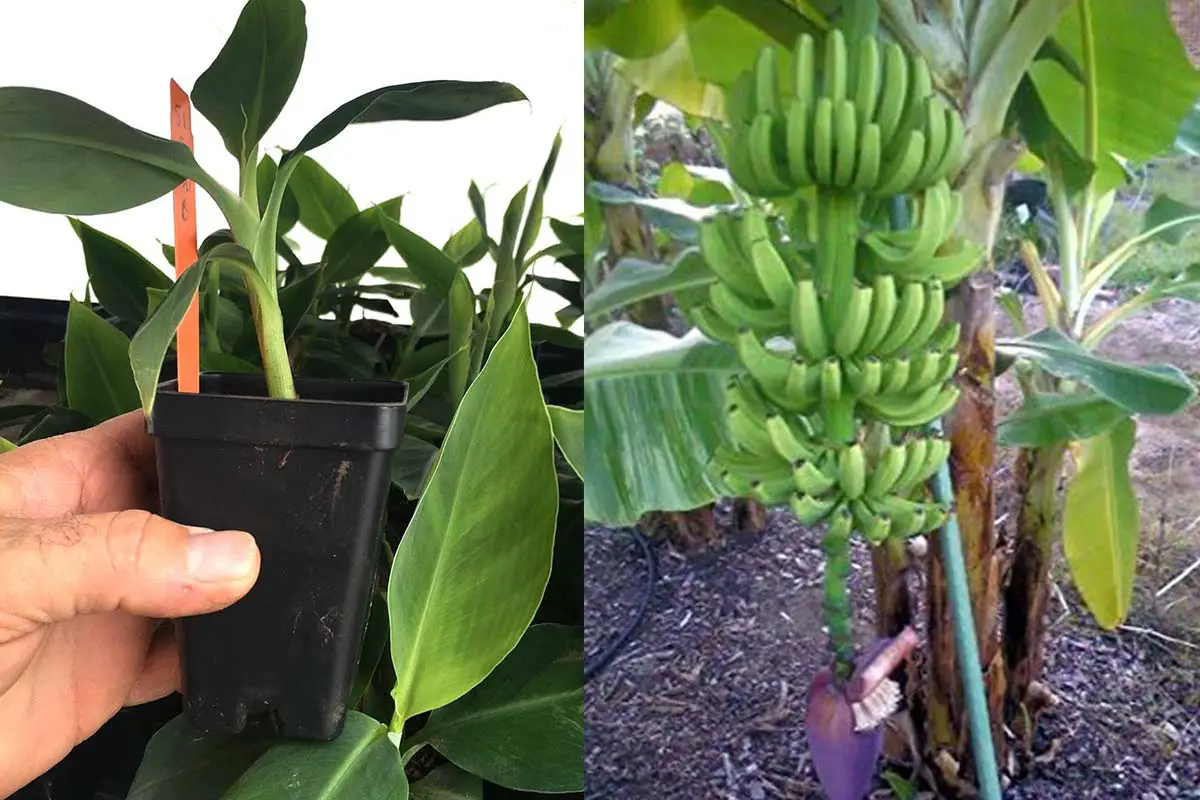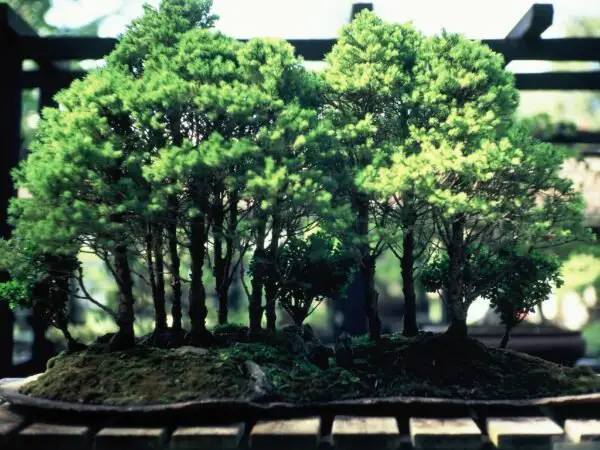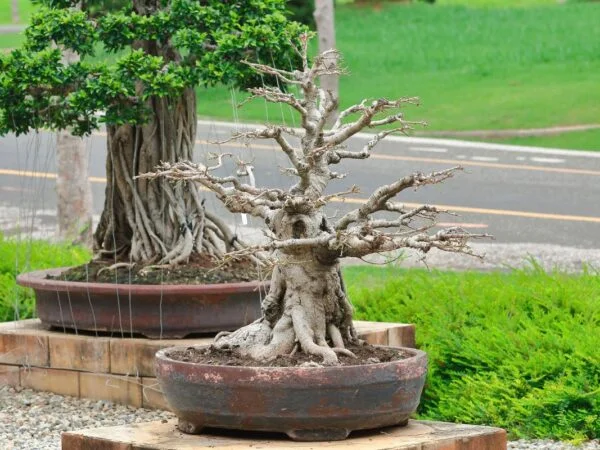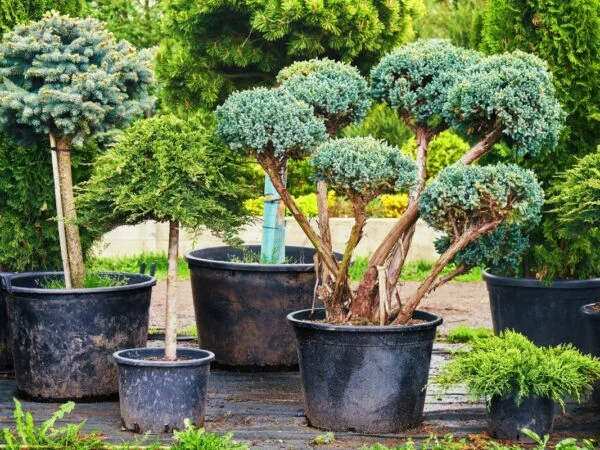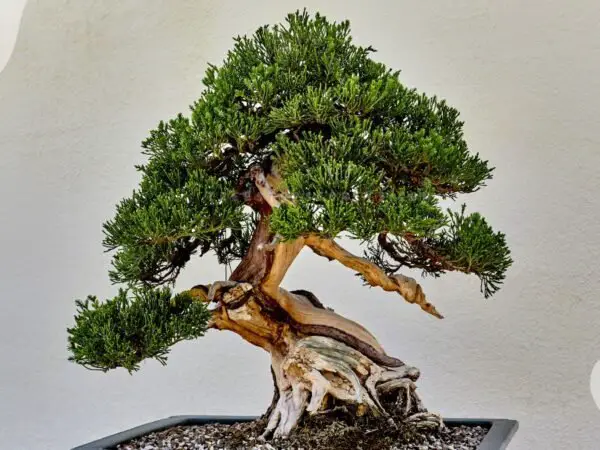Growing and caring for bonsai banana trees can be a rewarding and enjoyable experience for both novice and experienced gardeners. These miniature trees add a tropical flair to any space and are surprisingly easy to maintain once you understand their specific needs. This article will guide you through everything you need to know about growing and caring for bonsai banana trees, from choosing the right variety and pot to ensuring proper light, water, and soil conditions. Whether you’re looking to enhance your home garden or start a new hobby, bonsai banana trees are a unique choice that offers both beauty and a sense of tranquility.
Growing and Caring for Bonsai Banana Trees
A bonsai banana tree is a miniature version of the regular banana tree, carefully pruned and shaped to maintain its small size. Unlike full-sized banana trees, bonsai banana trees are grown in pots and require specific care techniques to thrive in limited space.
These tiny trees bring the charm of the tropics indoors or to your patio without the need for a large garden. Bonsai banana trees, typically dwarf varieties, have compact roots that make them suitable for pot cultivation. They can produce small bananas, adding a delightful surprise to their decorative appeal.
Specific Examples:
- Dwarf Cavendish Banana: Known for its short stature and large, bright green leaves, it’s perfect for bonsai due to its manageable size.
- Dwarf Red Banana: Offers a unique aesthetic with its reddish-purple leaves and smaller fruit, making it a striking addition to any bonsai collection.
Tips for Growing and Caring:
- Light: Bonsai banana trees thrive in bright, indirect sunlight. Ensure they receive at least 6 hours of light daily.
- Watering: Keep the soil consistently moist but not waterlogged. Overwatering can lead to root rot, while underwatering can dry out the plant.
- Soil: Use well-draining soil mixed with organic compost to provide the necessary nutrients.
- Pruning: Regular pruning helps maintain the desired size and shape. Remove dead or yellowing leaves to promote healthy growth.
- Temperature: Keep the tree in a warm environment, ideally between 65°F to 75°F, to mimic its natural tropical habitat.
| Topic | Description |
|---|---|
| Light | Needs bright, indirect sunlight for 6+ hours |
| Watering | Keep soil moist, avoid waterlogging |
| Soil | Well-draining with organic compost |
| Pruning | Regular pruning to maintain shape and health |
| Temperature | Best kept in 65°F to 75°F for optimal growth |
Are you fascinated by the idea of bringing a slice of the tropics into your home? Growing bonsai banana trees is not just about adding greenery to your space; it’s a fulfilling hobby that connects you with nature on a deeper level. Imagine the joy of seeing your miniature banana tree flourish and even bear tiny fruits! Read on to discover how easy it is to start your journey with bonsai banana trees and transform your indoor or outdoor space into a lush, tropical paradise.
Popular Varieties to Consider
When selecting a bonsai banana tree, there are several popular species to consider. Each variety has unique characteristics such as leaf shape, size, and fruiting habits, making them suitable for different preferences and growing conditions. Below is a table highlighting some of the most common species:
| Variety Name | Leaf Characteristics | Fruiting Habits |
|---|---|---|
| Musa basjoo | Large, broad leaves | Rarely fruits in bonsai |
| Musa velutina | Soft, fuzzy leaves | Produces small fruit |
| Musa acuminata | Smooth, elongated leaves | Commonly fruits |
These varieties not only enhance the aesthetic of my bonsai collection but also offer varying levels of care and maintenance. Choosing the right species based on personal preference and growing conditions is essential for success in growing and caring for bonsai banana trees.
Soil and Potting Needs
Choosing the right soil and pot is critical for the success of my bonsai banana trees. These factors ensure that the plants receive adequate nutrients, water drainage, and overall health.
Choosing the Right Soil Mix
For bonsai banana trees, I need a well-draining soil mix that combines both organic and inorganic components. A good mix should include ingredients like akadama, lava rock, and pumice, as these materials help prevent root rot and promote healthy growth.
When it comes to seedlings or cuttings, the choice of soil mix is less critical since these young plants will likely be transferred multiple times before reaching their final bonsai pots. For rooting cuttings or sprouting seeds, I find that straight perlite or a mix of perlite with peat moss or coir works effectively (Bonsai Tonight).
Here’s a summary of common soil mixes:
| Soil Mix Component | Percentage | Purpose |
|---|---|---|
| Akadama | 30% - 50% | Nutrient retention and structure |
| Pumice | Varies | Water retention and drainage |
| Lava Rock | Varies | Aeration and drainage |
For trees collected from gardens or mountainous areas, I prefer using a mix of 100% pumice, as it is lightweight and allows me to control moisture levels by adjusting particle size. Akadama-based premixes can also be used, but I rarely go over 30% for conifers or 50% for deciduous pre-bonsai trees (Bonsai Tonight).
Selecting the Appropriate Pot
Choosing the right pot for my bonsai banana trees involves considering several factors, such as size, drainage, and material. The pot should have adequate drainage holes to prevent water accumulation, which can lead to root rot.
When selecting the pot size, I aim for one that allows enough room for root growth while maintaining the miniature aesthetic characteristic of bonsai. A pot that is too large can lead to overwatering issues, while one that is too small may restrict growth.
Here’s a quick guide to pot sizing for bonsai trees:
| Pot Size | Suitable For |
|---|---|
| Small (4-6 inches) | Seedlings or cuttings |
| Medium (6-10 inches) | Young trees or early development |
| Large (10+ inches) | Mature bonsai needing more space |
The pot material also plays a role. I often choose clay pots, as they provide breathability and help regulate moisture levels. However, plastic pots can be used as well, especially for younger trees, as they are lighter and easier to handle.
By carefully selecting the right soil mix and pot, I can create an optimal environment for my bonsai banana trees to thrive.
Watering Practices
Watering is an essential aspect of growing and caring for bonsai banana trees. Understanding how much water is needed and recognizing the signs of overwatering can help ensure the health and vitality of my plants.
How Much Water Is Needed?
Bonsai banana trees thrive in moist soil, but they do not tolerate overly wet conditions. To determine when to water, I check the top few inches of soil. If they are dry, it's time to water again (Abana Homes). Proper watering practices are crucial for healthy growth and fruit production (Quora).
| Soil Condition | Action |
|---|---|
| Top 1-2 inches dry | Water the bonsai banana tree |
| Top 1-2 inches moist | Wait before watering again |
Signs of Overwatering
It is vital to ensure good drainage in both the pot and soil to prevent waterlogging. Overwatering can lead to root rot and other issues. Here are some signs that my bonsai banana tree may be receiving too much water:
| Sign | Description |
|---|---|
| Yellowing Leaves | Leaves begin to turn yellow, often indicating stress |
| Wilting | The plant appears droopy despite having moist soil |
| Mold or Fungus | Growth of mold on the soil surface or around the pot |
By following these guidelines and observing my bonsai banana tree closely, I can maintain a healthy watering routine that supports its growth and well-being.
Light and Temperature Requirements
Proper light and temperature conditions are essential for growing and caring for bonsai banana trees. These factors directly influence the health and growth of my bonsai plants.
Ideal Light Conditions
Bonsai banana plants thrive in bright, natural light but can also do well in filtered bright light. They require a significant amount of light to flourish. Insufficient lighting can hinder their growth and lead to weak stems and pale leaves.
| Light Condition | Description |
|---|---|
| Full Sun | 6-8 hours of direct sunlight daily |
| Filtered Bright Light | Indirect light suitable for growth |
When I notice that the top few inches of soil are dry, it's a sign that my bonsai banana tree may need watering again.
Temperature Preferences
Bonsai banana plants can tolerate a variety of temperatures; however, they do not respond well to fluctuations. Constant temperature changes can put my plants under stress, affecting their overall health. It is crucial to maintain a steady environment to promote their growth.
| Temperature Range | Description |
|---|---|
| Optimal Range | 70°F to 85°F (21°C to 29°C) |
| Tolerance Range | 50°F to 90°F (10°C to 32°C) |
I ensure that my bonsai banana trees are kept in a stable temperature range to support their well-being (Abana Homes). By providing the right light and temperature conditions, I can help my bonsai banana trees thrive and flourish.
Fertilization and Nutrients
To ensure my bonsai banana trees thrive, understanding their fertilization and nutrient needs is vital. These plants are heavy feeders that require a consistent feeding schedule to support their rapid growth.
Feeding Schedule for Growth
I typically fertilize my bonsai banana plants once or twice a month with liquid plant food. This frequency helps meet their high nutritional demands. The growth rate of these trees means they utilize nutrients quickly, so regular feeding is necessary for optimal health (Abana Homes).
| Month | Feeding Frequency |
|---|---|
| January | 1-2 times |
| February | 1-2 times |
| March | 1-2 times |
| April | 1-2 times |
| May | 1-2 times |
| June | 1-2 times |
| July | 1-2 times |
| August | 1-2 times |
| September | 1-2 times |
| October | 1-2 times |
| November | 1-2 times |
| December | 1-2 times |
Essential Nutrients for Health
Bonsai banana trees require a balanced supply of essential nutrients to grow successfully. The key nutrients include nitrogen, phosphorus, and potassium (often referred to as NPK).
- Nitrogen (N): Promotes healthy leaf growth and overall vigor.
- Phosphorus (P): Supports root development and flowering.
- Potassium (K): Enhances fruit quality and helps with drought resistance.
In addition to these primary nutrients, trace minerals like magnesium, calcium, and iron are also important for maintaining plant health. Proper watering, sunlight, and nutrients are essential for the thriving of bonsai banana trees, adhering to the basic principles of bonsai care (Global Fajar).
| Nutrient | Role in Growth |
|---|---|
| Nitrogen (N) | Leaf growth and overall vigor |
| Phosphorus (P) | Root development and flowering |
| Potassium (K) | Fruit quality and drought resistance |
| Magnesium | Photosynthesis and enzyme function |
| Calcium | Cell wall structure and growth |
| Iron | Chlorophyll production |
By maintaining a consistent feeding schedule and ensuring the right mix of nutrients, my bonsai banana trees can achieve robust growth and health.
Common Pests and Diseases
Caring for bonsai banana trees requires vigilance against pests and diseases that can threaten their growth and vitality. I have learned that early identification and management are key to maintaining healthy plants.
Identifying Common Pests
Several pests can affect bonsai banana trees, and recognizing their presence is vital for effective control. Below are some common pests I have encountered:
| Pest | Description | Damage |
|---|---|---|
| Banana Aphids | Soft-bodied, wingless pests | Causes curled, shriveled foliage and can transmit diseases like banana bunchy top disease and banana mosaic disease. |
| Banana Weevils | Nocturnal pests that tunnel through corms | Causes wilting and reduced fruit yields. |
Banana aphids can often be managed using insecticides, soapy water, or horticultural oil. If the plant is already infected, it may be best to destroy it to prevent further spread (Gardening Know How). For banana weevils, I have found that applying neem powder can help reduce their population, while insecticides can be used at the time of planting.
Managing Plant Health
Maintaining the health of my bonsai banana trees involves addressing both pests and diseases. Some common diseases I monitor for include:
| Disease | Description | Control Methods |
|---|---|---|
| Black Leaf Streak (Black Sigatoka) | A fungal disease prevalent in high humidity | Apply fungicides, increase space between trees for air circulation, and remove infected leaves. |
| Fusarium Wilt (Panama Disease) | A severe fungal infection that blocks nutrient uptake | No effective treatment; infected plants should be removed and destroyed to prevent spread. |
Black leaf streak can be effectively managed with fungicides and proper plant spacing to improve airflow. Unfortunately, fusarium wilt presents a more serious challenge, as it requires the immediate removal of affected trees to protect the rest of my garden.
By remaining vigilant and proactive in identifying pests and diseases, I can ensure the continued health and productivity of my bonsai banana trees.
Final Thoughts: Growing and Caring for Bonsai Banana Trees
Growing and caring for bonsai banana trees can be a delightful addition to your gardening journey. These unique trees provide a tropical feel and can be a conversation starter in your home. With the right care, including proper lighting, watering, and pruning, your bonsai banana tree can thrive and even produce small fruits. Whether you are an experienced bonsai enthusiast or a beginner, the joy of watching your bonsai banana tree grow is truly unmatched. Embrace this rewarding hobby and enjoy the beauty and tranquility it brings to your space.
FAQs about Growing and Caring for Bonsai Banana Trees
Q: How often should I water my bonsai banana tree?
A: Watering frequency depends on the climate and season. Generally, bonsai banana trees need to be watered when the top inch of soil feels dry. Ensure the pot has good drainage to prevent waterlogging and root rot.
Q: What is the best type of soil for bonsai banana trees?
A: The best soil for bonsai banana trees is a well-draining mix enriched with organic compost. A typical bonsai soil mix that includes akadama, pumice, and lava rock can be modified by adding compost to provide the necessary nutrients.
Q: Can bonsai banana trees grow indoors?
A: Yes, bonsai banana trees can thrive indoors if they are placed in a spot that receives bright, indirect sunlight for at least 6 hours daily. Make sure the indoor environment is warm, ideally between 65°F and 75°F.
Q: How do I prune my bonsai banana tree to maintain its shape?
A: Prune your bonsai banana tree by removing dead or yellowing leaves and cutting back any overgrown branches. This helps maintain the tree's size and encourages healthy growth. Regular pruning also helps shape the tree and promotes a compact form.
Q: What are common pests that affect bonsai banana trees, and how can I prevent them?
A: Common pests include spider mites, aphids, and scale insects. To prevent infestations, regularly inspect your tree, maintain proper watering practices, and use insecticidal soap or neem oil if pests are detected.
Q: How can I encourage my bonsai banana tree to bear fruit?
A: To encourage fruiting, provide optimal growing conditions such as adequate sunlight, warmth, and consistent watering. Fertilize the tree during its growing season with a balanced, water-soluble fertilizer to promote healthy growth and potential fruiting.
Image Source: Paid image from CANVA

